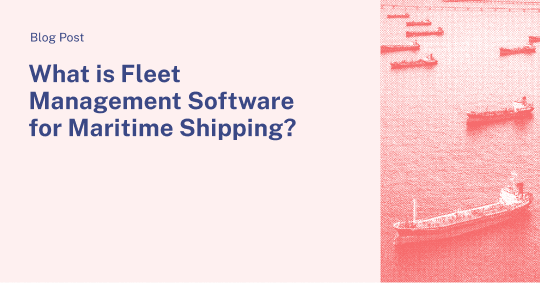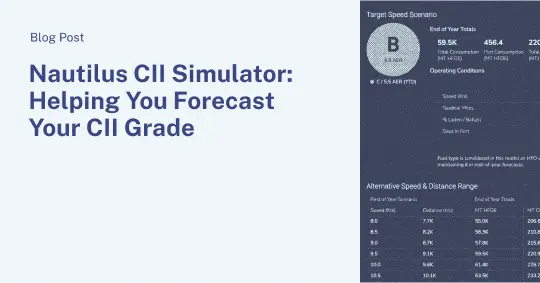In less than four months, a proverbial sea change will be hitting the ocean shipping industry – will your fleet be ready for it? On January 1, 2020, the long-awaited IMO 2020 regulations will go into effect. In a Forbes op-ed, Wood Mackenzie’s Alan Gelder calls it
“the largest reduction in the sulphur content of a transportation fuel undertaken at one time.” With a shift that big, there are bound to be questions on how to get it done, why it’s being changed, and what you can do to ensure your compliance with the new regulations.
At Nautilus, we’re strong believers in providing essential information to make smart and ecologically friendly decisions around shipping, fuel, and the environment in which it all takes place. To that end, we collected some of the most common questions about the rapidly approaching regulations, and answered them for your convenience.
What is IMO 2020?
IMO 2020 is a regulation undertaken by United Nations shipping agency the International Maritime Organization (IMO),
designed to lower the concentration of sulphur in shipping fuel. Where the limit of sulphur concentration in fuel oil was once limited at 3.5%, that limit will now plunge to 20% of that limit: 0.5%.
Although this plunge might be steep, the IMO is choosing to look at the considerable positive effects it will have on our environment. Health effects like heart, lung, and respiratory disease are expected to decrease worldwide through a lessening of air pollution, as are adverse effects to crops, forests, and aquatic habitats. But this considerable change won’t happen without first addressing the challenges of compliance.
You’d like to receive further information about IMO 2020?
Contact sales@nautiluslabs.co
What are shipping companies’ options for achieving compliance?
In the words of the IMO, there are four possible ways to operate in a compliant manner once the enforcement date arrives:
- Use of compliant fuel: BP and Royal Dutch Shell are reportedly already producing compliant fuels that are expected to be available at US ports and larger international ports like Singapore, Rotterdam, and UAE’s Fujairah.
- Use of an exhaust gas cleaning system (“scrubber”): the environmental ramifications of using a scrubber are still being studied in part by the IMO, but for the time being will serve as an effective backup…particularly as compliant fuel stores catch up to anticipated demand.
- Use of an alternative fuel: newer or more recently restored shipping vessels can run on liquefied natural gas (LNG) or methanol, both compliant and therefore likely to rise in popularity
- Use of onshore power supply when at berth
Looking for specific answers for your fleet?
Reach out to sales@nautiluslabs.co
What if we truly can’t comply?
In the event that a ship can’t comply, a Fuel Oil Non-Availability Report can be submitted for the analysis of a port state control body. It by no means guarantees exemption to fines or detainment, though, and
the International Chamber of Shipping stresses that a FONAR is a “tool of last resort,” and shouldn’t be viewed as a “free pass” to carry or use a non-compliant fuel source.
How to stay compliant?
Email us: sales@nautiluslabs.co
What costs could we anticipate as we prepare our fleets?
While the costs of fuel are harder to anticipate given the novel nature of this regulation, here are a few costs one could consider making to ease the transition into this new normal:
- Buying VLSFO (very low sulphur fuel oil) outright
- Switching fleet propulsion systems to run on liquefied natural gas, a universally compliant fuel
- Investing in scrubbers, to reduce excess sulphur in noncompliant fuel
- Consider also dedicating a “buffer” in budget for fines, which could be a possibility in international waters if compliant fuel is unavailable at a smaller port
- Investing in performance systems to better understand vessel performance and reduce fuel waste
Should we be worried or concerned about IMO 2020?
Ultimately, no. In addition to this being a net gain for the environment and the people who inhabit it, these seemingly daunting regulations are arriving with a considerable amount of support from the IMO itself. Specific port State control guidelines, and guidelines on consistent implementation, are both available
from the IMO directly.
Behind this sea change is a larger charge from the International Maritime Organization: a charge to “take bold action to clean up shipping emissions by reducing the sulphur content in ships’ fuel oil.” The shift is a significant one, and likely won’t come without considerable challenge. But it’s also the right one, and one that we are all capable of making in service of the planet.
You wish further insights?
Send us an email
How can Nautilus help?
With fuel availability and cost top of mind ahead of IMO 2020, Nautilus Platform will become your team’s go-to tool for both Ballast and Laden Optimization. By knowing what your vessels are capable of, the fuel costs at different ports and the fixture opportunity at those ports, we will start our partnership by empowering each team within your organization to choose the right places to bunker, the right fixtures to take and finally the best way to run a voyage to maximize TCE.


